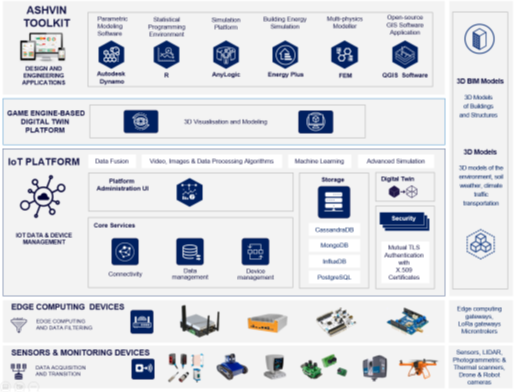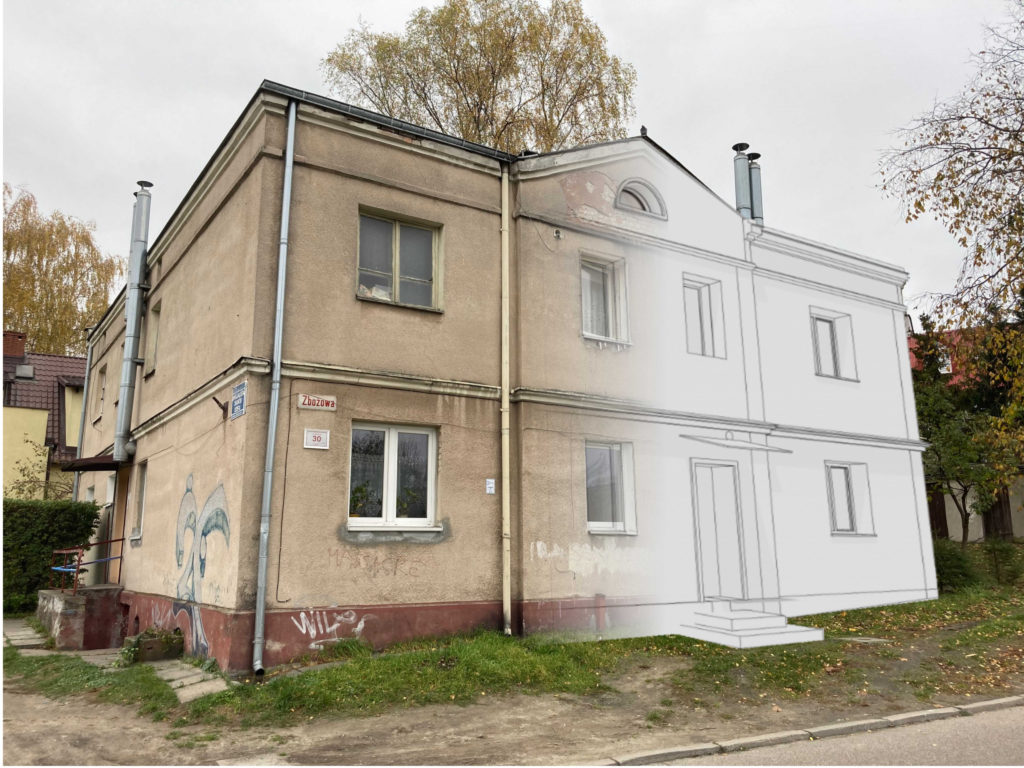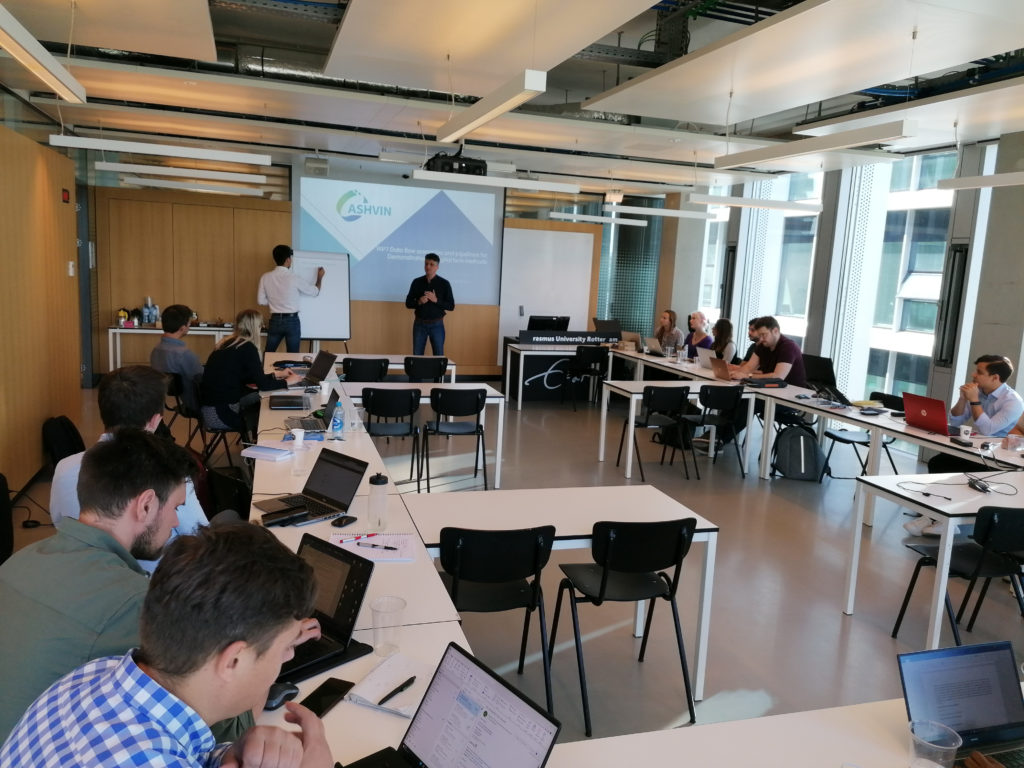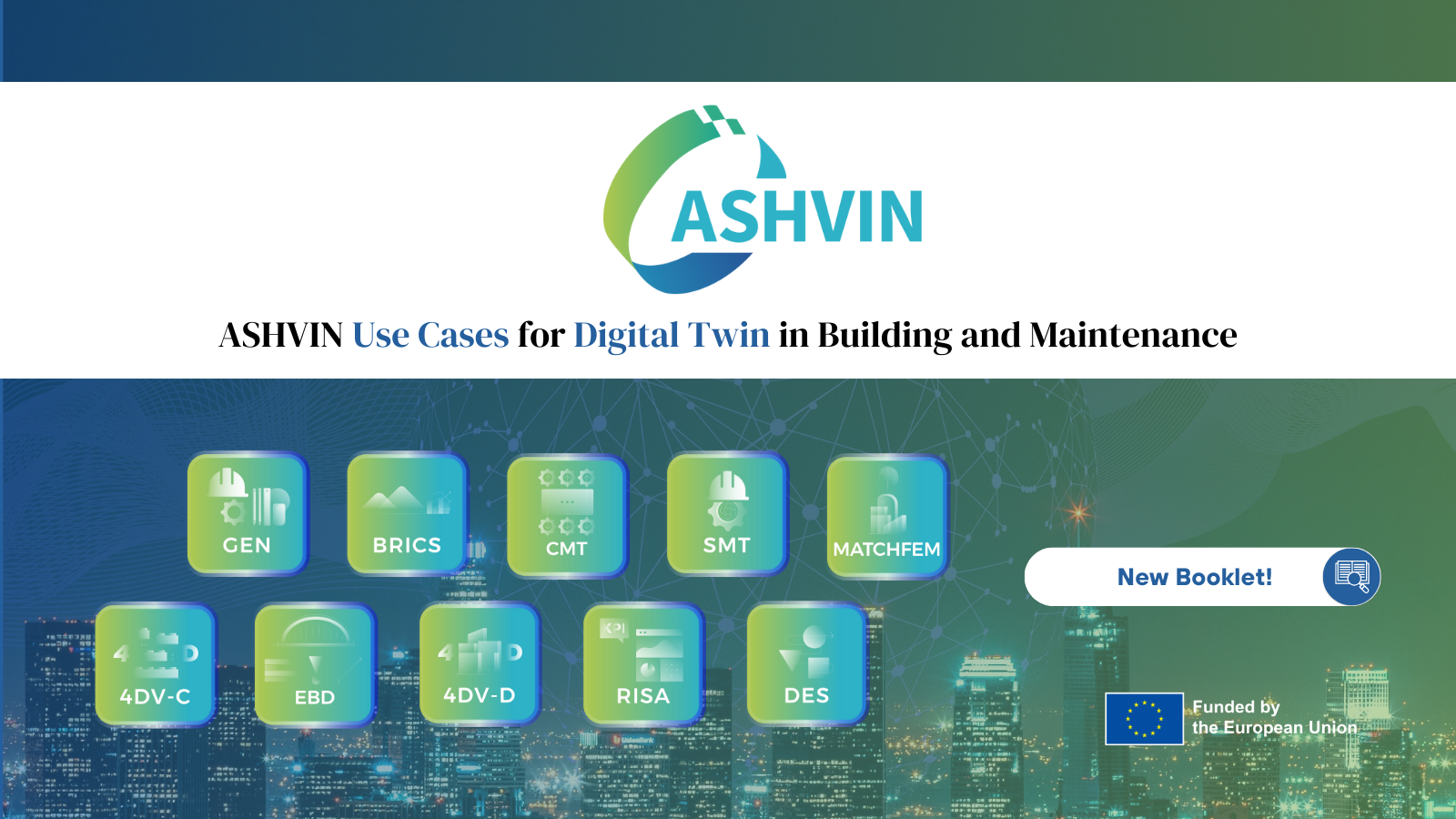ASHVIN develops a novel digital solution for the construction industry with the aim to reduce construction costs, improve productivity and increase safety on the building sites. This solution is a Digital Twin platform connected to a range of sensors and varied IoT tools acquiring data, and foremost, to the ASHVIN toolbox designed to support the construction professionals in design, construction, and maintenance. The project was kicked off two years ago, and the final project year started in October 2022. At this stage, we are taking the stock of our project. Now, we share with you the key achievements from the perspective of the technical research, the system demonstration, and the impact.

TECHNICAL
Achievements
The technical ASHVIN project partners (DTT, SBP, TUB, Infra and UPC) have developed the ASHVIN digital twin toolbox (↗️) including 10 tools addressed for the construction industry. These tools will boost efficiency, productivity, and safety in all 3 phases (Design, Construction and Operation) of lifecycle of civil infrastructure.

These innovative tools are built upon the openly accessible ASHVIN IoT platform (managed by DTT), and these are linked to the digital twin data gathered from the ASHVIN demonstration sites with different sensors and monitoring devices.
Moreover, in last September 2022, the consortium submitted 12 technical deliverables describing the research behind the ASHVIN technologies. Now, in total 18 public technical deliverables are openly accessible via ASHVIN’s Zenodo Community (↗️).
Lessons learnt
It is crucial that the end-users understand the added value of each tool. Therefore, the technical partners continue by developing BuildingSmart Use Cases (↗️) that illustrate the usability and the usefulness of each tool for the end-users. These will explain notably the used data type, the aimed usage moment, and the target stakeholders. And to complement the use cases, a set of tutorial videos will be created.
Focus of the final year
Now, the efforts will focus on collecting data from all demonstration sites. The target Key Performance Indicators (KPI) of the system are defined, and now these need to be achieved in the system validations at the 10 demonstration sites.
Also, our team will validate the toolbox and the UI dashboard with internal Industrial partners as well with external industrial mentors, which will guide the system towards further exploitation.
DEMONSTRATION
Achievements
There are 10 demonstration sites (↗️) located in six European countries (Spain, Poland, Germany, Sweden, the Netherlands). Running the numerous demo sites is a challenge that the team has taken over with tight collaboration and involvement of board range all stakeholders managing the different demonstration sites.

Interesting fact is that the ASHVIN system will be implemented on different types of structures as bridges, buildings, sport stadium roof structure, airport runway or even quay wall.
At these sites various measurements are collected; for example, for Demo Site #4 “Logistics Hall construction in Germany” time-lapse images for construction phase were gathered, while for site #3 “Airport runway in Croatia” drone equipped with high-resolution camera was used to capture images of the operational areas of the airport. Other interesting activities are monitoring of Indoor Air Quality at the demo site #2 “Building renovation in Poland” and measuring the position of the nodes with point clouds in different seasons for the demo site #9 “Sport stadium roof structure”. Finally, the project applies an Artificial Intelligence model to automatically detecting cracks and other defects from drone-based images. All gathered data will feed the ASHVIN toolbox solutions.
Now, each tool of the ASHVIN toolkit has been tested at least on one demonstration site.
Lessons learnt
Our cooperation with owners of demonstration projects shows that digitalization of infrastructure is needed and very well received. Also often, various data and information are gathered during the construction and operational phase but the engineers and building owners are not aware how this data can be analyzed and post processed. One of future challenges are the storage and security of the data. Therefore, it is very important for ASHVIN to show how various types of data/information/measurement can be linked with specific tools and how design, construction, operational and maintenance stages can be improved.
Focus of the final year
At certain demonstration sites, the measurements continue. Most of the tools are in the final implementation phase where these are linked to the monitoring of the set KPIs that will contribute to better scheduling and allocation of resources, reduction of accidents on construction sites and cost reduction.
IMPACT
Achievements
The ASHVIN community is an ever-growing hub of varied stakeholders from research community to technology providers and to construction industry. In social media (Twitter and LinkedIn), ASHVIN’s results and updates are regularly followed by 2080 members. And this community continues to learn with a tailored social media campaign about the demonstration sites, the project facts, the project team, and the technical research results. To support the online presence, ASHVIN has published over 27 blog articles and 3 newsletters about the project research. The scientific dissemination has resulted notably in contribution to 12 scientific conferences and publishing 20+ project deliverables in open access onZenodo (↗️). D8.2 Dissemination and Communication Interim report (↗️) presents these outcomes in detail.
ASHVIN will propose a European wide standard (↗️) fostering the adoption of digital twin technologies in the construction industry. In the first project year, the standardization plan was drafted, and it draws the standardization landscape in Digital Twins, defines the existing gaps and reflects the ASHVIN partners’ needs standardization. Based on this plan, during the second project year, ASHVIN organized two standardization workshops refining the topic that will be translated into a new work item proposal (NWIP) will be presented to the related SDOs and work groups.
ASHVIN market domains are related to Digital Twin Market. To better visualize and understand the integrated ASHVIN Solution’s key elements, all partners have joined forces to create a detailed Business Model Canvas and to identify at least 9 Key Exploitable Results (KER). D8.3 Impact Assessment and Exploitation Interim report (↗️)presents the ASHVIN exploitation plan in detail.
Lessons learnt
To keep the stakeholders engaged and interested in the ASHVIN results, the communication must be frequent and take place in different targeted channels. The ASHVIN team needs to be well aligned to vehicle the same key messages creating the ASHVIN brand and to disseminate the major results.
Focus of the final year
ASHVIN will foster the scientific dissemination especially by focusing on scientific publications in peer-review journals. The communication will be even more centred around the tangible results in technical development and on the demonstration sites. Also the NWIP for the global standard will be finalized.
In terms of the exploitation, DTT, leading the task will deliver a final version of the business model as well as create a business plan, including a Financial Plan and a Rollout Plan for the ASHVIN Solution.






